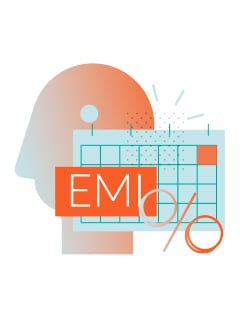CKYC Registry
-
Customer Service Contact us Service request Locate a branch
Find all the help you need
Scan the QR, get our app, and find help on your fingertips

Help CenterSupport topics, Contact us, FAQs and more
-
Login
Are you ready for an upgrade?
Login to the new experience with best features and services
-
Login
Are you ready for an upgrade?
Login to the new experience with best features and services
- Accounts
-
Deposits
IDFC FIRST Bank Deposits
View all Deposits -
Loans
IDFC FIRST Bank Loans
View all Loans - Wealth & Insure
-
Payments
IDFC FIRST Bank Payments
View all Payments -
Cards
IDFC FIRST Bank Cards
View all Cards - Blogs
- Corporate Account
-
Cash Management Services
IDFC FIRST Bank Cash Management Services
View all Cash Management Services - Supply Chain Finance
-
Corporate Lending
IDFC FIRST Bank Lending
View all -
Treasury
IDFC FIRST Bank Treasury
See more details - NBFC Financing
Support topics, Contact us, FAQs and more
- IDFC FIRST Bank Accounts
-
Savings Account
-
Corporate Salary
Account -
Senior Citizens
Savings Account -
First Power
Account -
Current Account
-
NRI Savings
Account -
TASC Institutional
Account -
Savings Account
Interest Calculator
- IDFC FIRST Bank Deposits
-
Fixed Deposit
-
Recurring Deposit
-
NRI Fixed Deposit
-
Safe Deposit Locker
-
FD Calculator
-
RD Calculator
- IDFC FIRST Bank Loans
-
Personal Loan
-
Consumer Durable
Loan -
Home Loan
-
Business Loan
-
Professional Loan
-
Education Loan
-
New Car Loan
-
Pre-owned Car Loan
-
Two Wheeler Loan
-
Pre-owned Two
Wheeler Loan -
Commercial Vehicle
Loan -
Gold Loan
-
Loan Against Property
-
Loan Against Securities
-
Easy Buy EMI card
-
Personal Loan
EMI Calculator -
Education Loan
EMI Calculator -
Home Loan
EMI Calculator
- IDFC FIRST Bank Wealth & Insure
-
FIRST Select
-
FIRST Wealth
-
FIRST Private
-
Mutual Funds
-
Sovereign Gold Bond
-
Demat Account
-
Term Insurance
-
Life Insurance
-
Health Insurance
-
General Insurance
-
Bonds
-
Loan Against
Securities -
Portfolio Management
Service
- IDFC FIRST Bank Payments
-
FASTag
-
Credit Card
Bill Payments -
UPI
-
Funds Transfer
-
Forex Services
-
Pay Loan EMI
- IDFC FIRST Bank Cards
-
Ashva :
Metal Credit Card -
Mayura :
Metal Credit Card -
FIRST Millennia
Credit Card -
FIRST Classic
Credit Card -
FIRST Select
Credit Card -
FIRST Wealth
Credit Card -
FIRST WOW!
Credit Card -
Deals
-
Debit Cards
-
Co-branded Cards
-
Credit Card
EMI Calculator -
FIRST Corporate
Credit Card -
FIRST Purchase
Credit Card -
FIRST Business
Credit Card
- Premium Metal Credit Cards
-
AshvaLifestyle1% Forex₹2,999
-
MayuraLifestyleZero Forex₹5,999
-
FIRST PrivateInvite Only
- Best for travellers
-
MayuraZero ForexMetal₹5,999
-
Ashva1% ForexMetal₹2,999
-
FIRST WOW!Zero ForexTravelLifetime Free
-
FIRST SWYPTravel OffersEMI₹499
-
FIRST Select1.99% ForexLifestyleLifetime Free
-
FIRST Wealth1.5% ForexLifestyleLifetime Free
-
Club VistaraTravelLifestyle₹4,999
-
IndiGo IDFC FIRST Dual Credit CardTravelLifestyle₹4,999
- Max benefits, Free for life
-
FIRST Classic10X RewardsShoppingNever Expiring Rewards
-
FIRST Millennia10X RewardsShoppingNever Expiring Rewards
-
FIRST Select10X RewardsLifestyle1.99% Forex
-
FIRST Wealth10X RewardsLifestyle1.5% Forex
-
FIRST WOW!RewardsTravelZero Forex
-
LIC ClassicRewardsInsuranceShopping
-
LIC SelectRewardsInsuranceShopping
- Reward Multipliers
-
AshvaLifestyleMetal₹2,999
-
MayuraLifestyleZero Forex₹5,999
-
FIRST ClassicNever Expiring RewardsShoppingLifetime Free
-
FIRST MillenniaNever Expiring RewardsShoppingLifetime Free
-
FIRST SelectNever Expiring RewardsLifestyleLifetime Free
-
FIRST WealthNever Expiring RewardsLifestyleLifetime Free
- Rewards & Credit on UPI
-
FIRST Power+FuelUPI₹499
-
FIRST PowerFuelUPI₹199
-
FIRST EA₹NVirtual1% Cashback₹499
-
FIRST DigitalVirtualUPI₹199
-
IndiGo IDFC FIRST Dual Credit CardUPITravelDual cards
- Fuel and Savings
-
FIRST PowerRewardsUPI₹199
-
FIRST Power+RewardsUPI₹499
-
LIC ClassicRewardsInsuranceShopping
-
LIC SelectRewardsInsuranceShopping
- Express and Flaunt
-
AshvaMetal1% Forex₹2,999
-
MayuraMetalZero Forex₹5,999
-
FIRST SWYPEMIOfferMAX₹499
-
FIRST MillenniaRewardsShoppingLifetime Free
- FD Backed rewarding Credit Cards for all
-
FIRST EA₹NVirtualCashback₹499
-
FIRST WOW!Zero ForexTravelLifetime Free
-
CreditPro Balance TransferTransfer & SaveReduce InterestPay Smartly
- IDFC FIRST Bank NRI Forex Solutions
-
Send money to India-Wire transfer
-
Send money to India-Digitally
-
Send money abroad
-
Max Returns FD (INR)
- IDFC FIRST Bank MSME Accounts
-
Platinum Current
Account -
Gold
Current Account -
Silver Plus
Current Account -
Merchant Multiplier
Account -
Agri Multiplier
Account -
TASC Institutional
Account -
Dynamic Current
Account -
World business
Account -
First Startup
Current Account
- IDFC FIRST Bank Business Loans
-
Business Loan
-
Professional Loan
-
Loan Against Property
-
Business Loan for Women
-
Working Capital Loan
-
Construction Equipment Loan
-
Machinery Loan
-
Healthcare Equipment Loan
- IDFC FIRST Bank Business Solutions
-
Payment Solutions
-
Tax Payments
-
Doorstep Banking
-
Point of Sale (POS)
-
Escrow Accounts
-
NACH
-
Payment Gateway
-
UPI
-
Virtual Accounts
-
As per amendment in the Income Tax Rules, PAN or Aadhaar are to be mandatorily quoted for cash deposit or withdrawal aggregating to Rupees twenty lakhs or more in a FY. Please update your PAN or Aadhaar. Kindly reach out to the Bank’s contact center on 1800 10 888 or visit the nearest IDFC FIRST Bank branch for further queries.
-
-
Most Searched
Sorry!
We couldn’t find ‘’ in our website
Here is what you can do :
- Try checking the spelling and search
- Search from below suggestions instead
- Widen your search & try a more generic keyword
Suggested
Get a Credit Card
Enjoy Zero Charges on All Commonly Used Savings Account Services
Open Account Now
Children’s education is a top priority and a significant milestone for most Indian families. However, in addition to the increasingly competitive landscape, the cost of education can be a serious hurdle. Education inflation in India is estimated at 8%-10% per annum, which is almost double that of retail inflation.
A standard undergraduate degree in India that costs Rs 10 lakh today on average, will set you back by more than double that amount a decade from now. The financial challenges compound further if you consider Ivy League institutions or international programs.
Education planning is therefore imperative to ensure that your child’s dreams and aspirations are fulfilled and set on the path to success. Read on to find out how you can strategize for your child’s education plan.
Estimate the actual cost
To get a ballpark figure, you will have to consider many variables – tuition fees, living and travelling expenses, utilities, healthcare, and other sundry costs. You will also have to account for changes in currency value exchange rates for international courses. To be safe, add another 10% to your estimated estimate. Adjust this ballpark figure for education inflation at 8% - 10% each year, depending on the time till you need the funds.
Set a time horizon for goal-based investing
Investing for your child’s education goals is time-sensitive as it is based on your child’s readiness to pursue their graduate or post-graduate program. Your savings plan and investment choices will depend on how much time you have. Once you know the required corpus, you will have to work backwards to understand how much you need to save and invest every month to achieve the desired corpus. Naturally, the earlier you begin, the more you can save and take advantage of a higher rate of compound interest on the investment.
Assess your existing financial health
Before you get on an investment plan, you must take stock of all existing assets and liabilities. You may already have some resources or investments that could be diverted towards the education fund, giving a much-needed head start. Conversely, if you have other fixed liabilities like a home loan or car loan, you must account for the monthly outlay first and then figure out how much you can save. A budgeting exercise can help you find avenues to cut down on non-discretionary expenses and fruitfully utilize the funds towards your child’s education.
Make smart investment choices
Saving for children’s education requires long-term planning, and it is crucial to devise a separate portfolio for the goal. The asset allocation strategy will depend on your risk appetite and time to divestment. If the investment horizon is more than five years away, equity mutual funds offer an excellent opportunity to invest via a systematic investment plan (SIP) and earn higher returns.
As you approach your goal, apply a rebalancing strategy wherein you gradually book profits and move the portfolio towards fixed income investments to protect its value from market volatility and uncertain economic conditions.
READ MORE
Adopt a flexible investment plan
Avoid parking your funds in rigid assets such as children’s education insurance plans or other long-term close-ended small savings schemes. Flexible investments without lock-ins or pre-determined payouts make it possible to pivot your investment strategy in case of any economic or investment environment changes. They also allow you to continue with your asset allocation and rebalancing strategy. More importantly, if you need to liquidate investments at short notice, your investments should offer that flexibility.
Take a step-up approach to investing
A step-up approach to investing is nothing but increasing your allocation towards the goal to correspond with your increase in income as the years go by. This strategy not only allows you to invest more and help gain from quicker compounding but also makes it easier to counter inflation and other unexpected financial hurdles effectively. Likewise, if you come by any spare resources or surplus funds (say by bonus, inheritance, or windfall gain), you can use a good part of it to make a lump sum investment towards the college fund.
Get adequate insurance for the family
Your dream of giving your child the best education can be severely impeded in the event of your untimely demise or if you get diagnosed with a life-threatening disease or meet with an accident that hinders your ability to earn. It is essential that you purchase the right amount of insurance after accounting for all your family’s needs, including coverage for living expenses and outstanding liabilities. Adequate life insurance acts as a back-up plan that ensures you can also fulfil your family’s shared goals (such as your child’s education) through the insurance payout.
Have an emergency fund in place
An emergency fund can serve various purposes. Primarily, it acts as a deterrent against dipping into the education corpus to take care of other financial emergencies. On the other hand, the emergency savings plan can be a savior if you need quick funds related to your child or their education. For instance, during the peak of the pandemic, many students abroad had to unexpectedly rush back home after their universities shut down (often for months) in an attempt to control the spread of COVID-19. In such a scenario, an emergency fund can provide the much-needed liquidity to travel back and forth.
Leverage an Education Loan
Given how expensive education can get, despite your best efforts and thorough calculations, your savings may not match what may be required for your child’s degree. Here, an education loan can be useful to bridge the gap. IDFC FIRST Bank offers swift and easy collateral-free education loans so that your child can study at their dream college.
These loans are available for over 18,000 different domestic and international courses, ensuring that your child gets the best opportunity in their field of education. More importantly, IDFC FIRST Bank’s education loan schemes come at attractive interest rates and with customized repayment options.
Education is the best gift you can give your children. Be sure to plan today for their bright future!
Disclaimer
The contents of this article/infographic/picture/video are meant solely for information purposes. The contents are generic in nature and for informational purposes only. It is not a substitute for specific advice in your own circumstances. The information is subject to updation, completion, revision, verification and amendment and the same may change materially. The information is not intended for distribution or use by any person in any jurisdiction where such distribution or use would be contrary to law or regulation or would subject IDFC FIRST Bank or its affiliates to any licensing or registration requirements. IDFC FIRST Bank shall not be responsible for any direct/indirect loss or liability incurred by the reader for taking any financial decisions based on the contents and information mentioned. Please consult your financial advisor before making any financial decision.
The features, benefits and offers mentioned in the article are applicable as on the day of publication of this blog and is subject to change without notice. The contents herein are also subject to other product specific terms and conditions and any third party terms and conditions, as applicable. Please refer our website www.idfcfirstbank.com for latest updates.






















